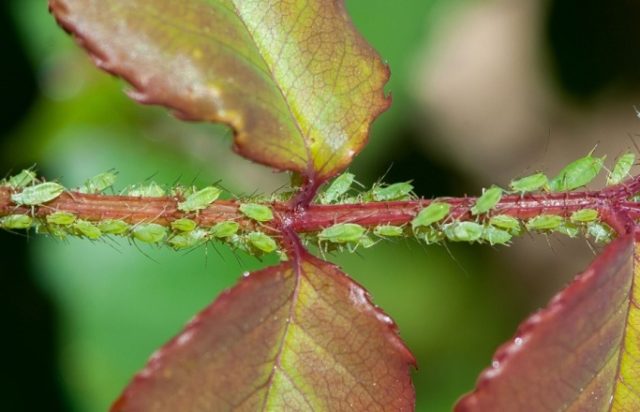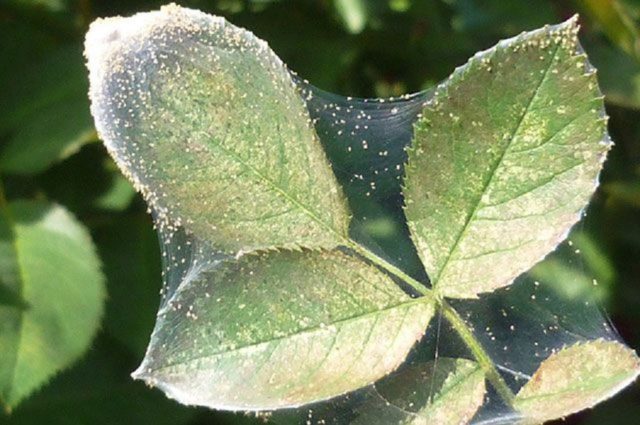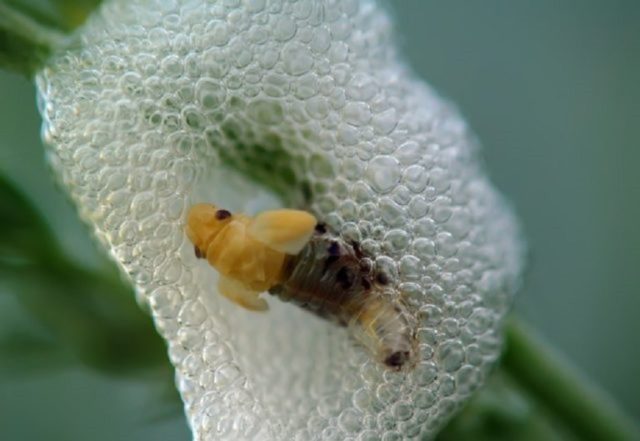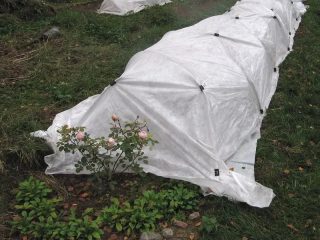Content
Ground cover rose Super Dorothy is a common flowering plant that is popular with both amateur gardeners and more experienced landscape designers. Its climbing branches are decorated with a large number of pink buds, which do not fall off almost until the end of autumn.
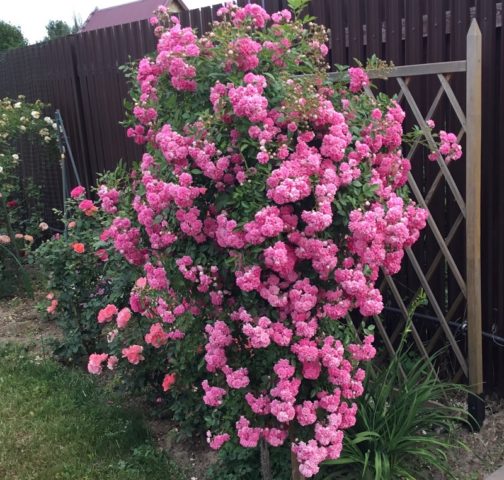
Rose Super Dorothy is a re-blooming, unpretentious crop with high immunity.
History of selection
Thanks to American breeders at the beginning of the 20th century, an amazing climbing rose called Dorothy Perkinx was born. This variety is still very popular today due to its lush and long flowering. But unfortunately, the decorative nature of the crop is not able to completely cover one huge drawback - its excessive vulnerability to powdery mildew. And it was because of this that German scientists began to work on creating a more improved species. Thus, in 1986, an improved variety of ground cover rose, Super Dorothy, also known as Heldoro, was born.
In addition to increased immunity to powdery mildew and other diseases, scientists were able to give the Super Dorothy hybrid a more saturated color of the buds and increase its flowering period.
Description and characteristics of the variety of climbing rose Super Dorothy
Rose Super Dorothy can easily be called one of the best among all climbing species of this garden crop. The bush is voluminous, reaching 3 m in height and almost 1.5 m in width. It is quite branched and is distinguished by flexible shoots with a small number of thorns. It is due to their high flexibility that the plant can be placed on any vertical support without much difficulty.
The root system is quite developed, so the bush takes root well after planting. This also makes the Super Dorothy rose less demanding to care for.
There is an average amount of green mass; it is practically invisible behind the lush flowering brushes. Leaves with a slightly shiny surface, small in size, standard color, with jagged edges.
The flower has a shape uncharacteristic for roses, since in the full bloom phase its petals begin to curl outward, which visually adds volume. Due to this effect, the buds in a mature state more closely resemble pompoms. And taking into account the fact that up to 40 buds can bloom simultaneously in racemose inflorescences, the green mass on the bush is not particularly visible.
The flowers themselves can be up to 5 cm in diameter with 17-25 petals, double, have a rich pink color, in some places even crimson, with a white spot in the center. The aroma is pleasant, sweet, with notes of vanilla. It is worth noting that the color of the petals is highly susceptible to sunlight, which leads to a loss of their brightness.Gradually, faded flowers dry out completely, so they need to be cut off so as not to spoil the decorative appearance of the rose. At the same time, old buds are quickly replaced with new ones, so the bush almost never remains empty during the entire flowering period.
According to numerous reviews, as well as descriptions and photos, the climbing rose Super Dorothy is very decorative, not afraid of powdery mildew and black spot. In addition, many gardeners have also noted the winter hardiness of the variety, since the crop can withstand frosts down to -25 °C.
Advantages and disadvantages
The Super Dorothy rose gained its popularity for a reason, since this variety has many advantages.
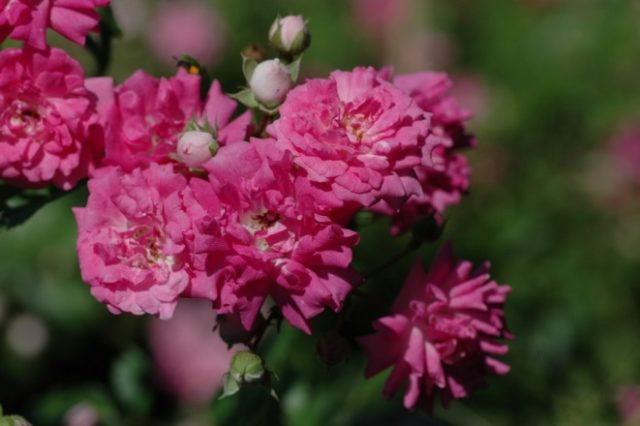
Despite the small size of the buds, they constantly replace each other throughout the entire flowering period.
Pros:
- long flowering from June to October;
- due to the constant change of buds, the bush is almost never left without flowers throughout the entire season;
- increased resistance to powdery mildew and a number of other diseases;
- not afraid of precipitation and dry weather;
- good frost resistance (down to -25 °C, can easily tolerate winter without shelter);
- ease of care.
Minuses:
- the susceptibility of flowers to change color due to exposure to the sun, they fade;
- requires tying to a support.
Reproduction methods
The variety of climbing rose Super Dorothy can be bred in 2 ways:
- cuttings;
- layering.
To make cuttings from the Super Dorothy rose, planting material is prepared from the middle of an already faded cluster. In this case, the length of the cut part must be at least 15 cm.After harvesting, place it in pre-prepared and moistened soil, covered with film. When the cuttings take root, they cannot be planted immediately in open ground; this is done only for the 3rd season.
The method of propagation by layering of the Super Dorothy rose variety is faster than cuttings. In this case, the lower lash is leaned against the ground, secured with special clamps and lightly sprinkled with soil. Within a year, when the cuttings take root, they are separated from the mother bush and transplanted to a permanent place.
Growing and care
Having decided to plant the ground cover rose Super Dorothy on your site, it is important to choose the right site for it. Despite the high survival rate during transplantation into open ground, you should choose an area for the seedling with good lighting and protection from draft winds.
The most suitable time for planting is spring. And the process itself consists of the following steps:
- First, dig a hole with a diameter of 60 cm and a depth of at least 50 cm.
- A drainage layer is placed at the bottom, and a layer of sand is also poured.
- Humus and peat are added to the ground. It is also recommended to add about 300 g of wood ash if the soil is highly acidic and fertilizers for roses.
- Before planting, the seedling itself is also pre-prepared. To do this, its roots are shortened by 1/3 and placed in a solution of a growth-stimulating drug for at least 4 hours.
- Afterwards, the seedling is removed, allowed to dry slightly and placed in the center of the hole.The roots are carefully straightened and covered with prepared substrate (the root collar must be located 10 cm in the ground).
- Lightly tamp the soil and water generously.

For planting, you should choose a seedling with well-developed 3-4 shoots
After planting, the Super Dorothy rose needs regular and fairly abundant watering. It is produced once every 7-10 days with warm, settled water strictly at the root, avoiding contact with leaves and flowers. Watering should be done in the evening. To better retain moisture, it is recommended to mulch.
After each watering, the soil must be loosened and weeds must be removed at the same time. This is necessary for soil breathability.
By autumn, watering should be reduced, and if the weather is rainy, then stopped altogether.
The Super Dorothy rose should be fed only in the 2nd year after planting. In this case, fertilizer begins to be applied in early spring, as soon as the snow melts. This fertilizing must be done using mineral nitrogen-containing compounds. After 2 weeks, you can additionally add organic matter (mullein) to the soil. Further feeding of the rose from the moment of budding is carried out every 2 weeks with mineral complexes containing magnesium, potassium and phosphorus. But compositions with nitrogen are no longer used to prevent the formation of new shoots.
To form a beautiful crown, Super Dorothy rose bushes are pruned. This procedure is also necessary to stimulate the growth of new shoots.
The pruning itself should be done with a sharp knife or pruning shears, which must be disinfected. The cut is made at an angle at least 0.5 cm above the bud. But branches that have frozen should be removed down to living tissue.
As for preparing for winter, it is still recommended to insulate the bush. To do this, the Super Dorothy rose is mulched at the base with earth or peat to a height of 30 cm. Then all the shoots are removed from the support, carefully tucked onto a prepared substrate of straw or pine needles, and tied. A covering non-woven material is placed on top, thereby creating a mini-greenhouse. Some areas should be left uncovered for ventilation, and when the temperature drops to 10 °C, the bush should be completely wrapped. The plant is opened when the temperature rises to + 10 °C.
Pests and diseases
Since the Super Dorothy rose variety has good immunity to various diseases, pests pose a particular danger to it. Among them it is worth noting:
- aphids, which can attack a plant several times a season;
Preparations such as “Alatar”, “Aktara”, “Fitoverm” work well against aphids.
- spider mite, which entangles the leaves and buds of a rose with a white web;
This pest is first washed off with a stream of water, then the bush is treated with “Actofit”, “Isofren” or “Akreks”
- slobbering pennitsa, which can be noticed by the formation of white foam on the leaves and stems.
Often this pest is simply crushed, and then the rose is treated with standard preparations
To completely eliminate the appearance of powdery mildew, it is still recommended to carry out preventive treatment of the Super Dorothy rose in early spring with copper-containing preparations. And to prevent the occurrence of bacterial burn, the bush should be covered in time for the winter.
Application in landscape design
Rose Super Dorothy is actively used in landscape design. It is ideal for decorating gazebos, arches, and verandas. It is used both as a climbing crop, growing on a trunk, and as a ground cover, landscaping slopes and multi-level terraces.
Pink flowers will harmonize perfectly with garden plants such as clematis, phlox and irises. But against the background of large-flowered varieties, the Super Dorothy rose will easily get lost and be invisible.
Conclusion
Rose Super Dorothy is not only easy to care for, but also has excellent decorative properties. Even an inexperienced gardener can easily grow this crop by decorating his garden with numerous pink flowers.
